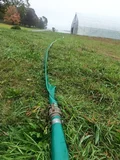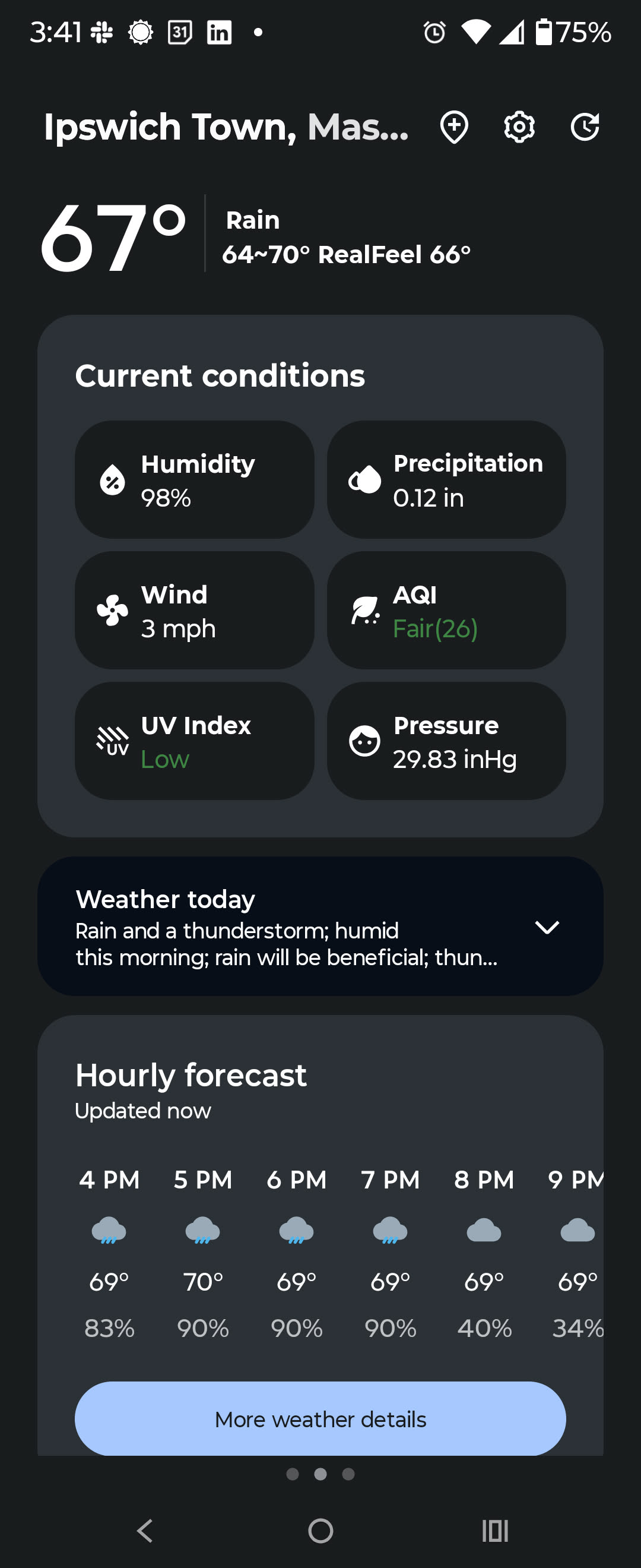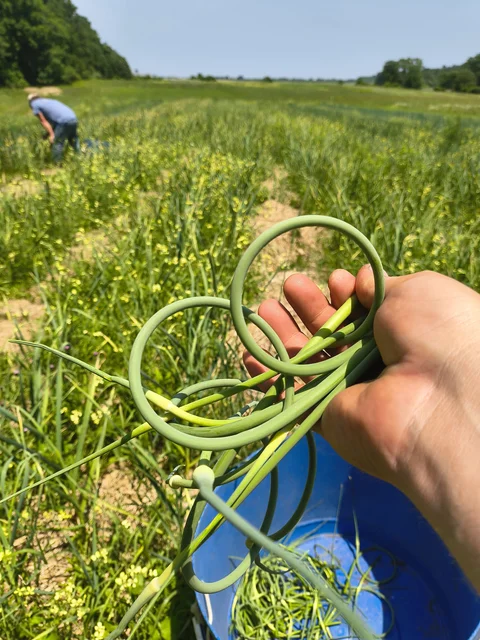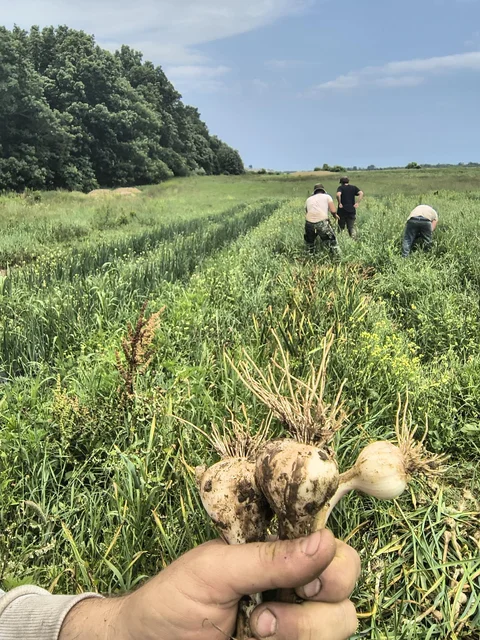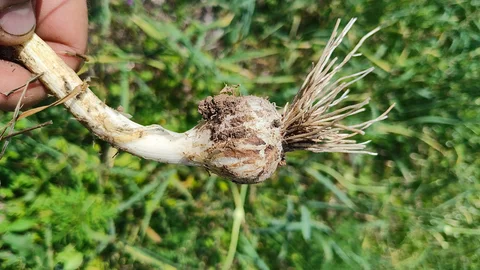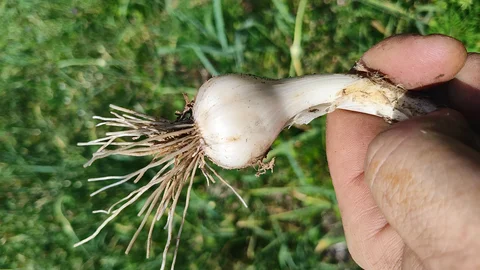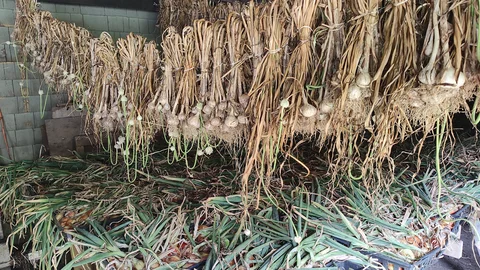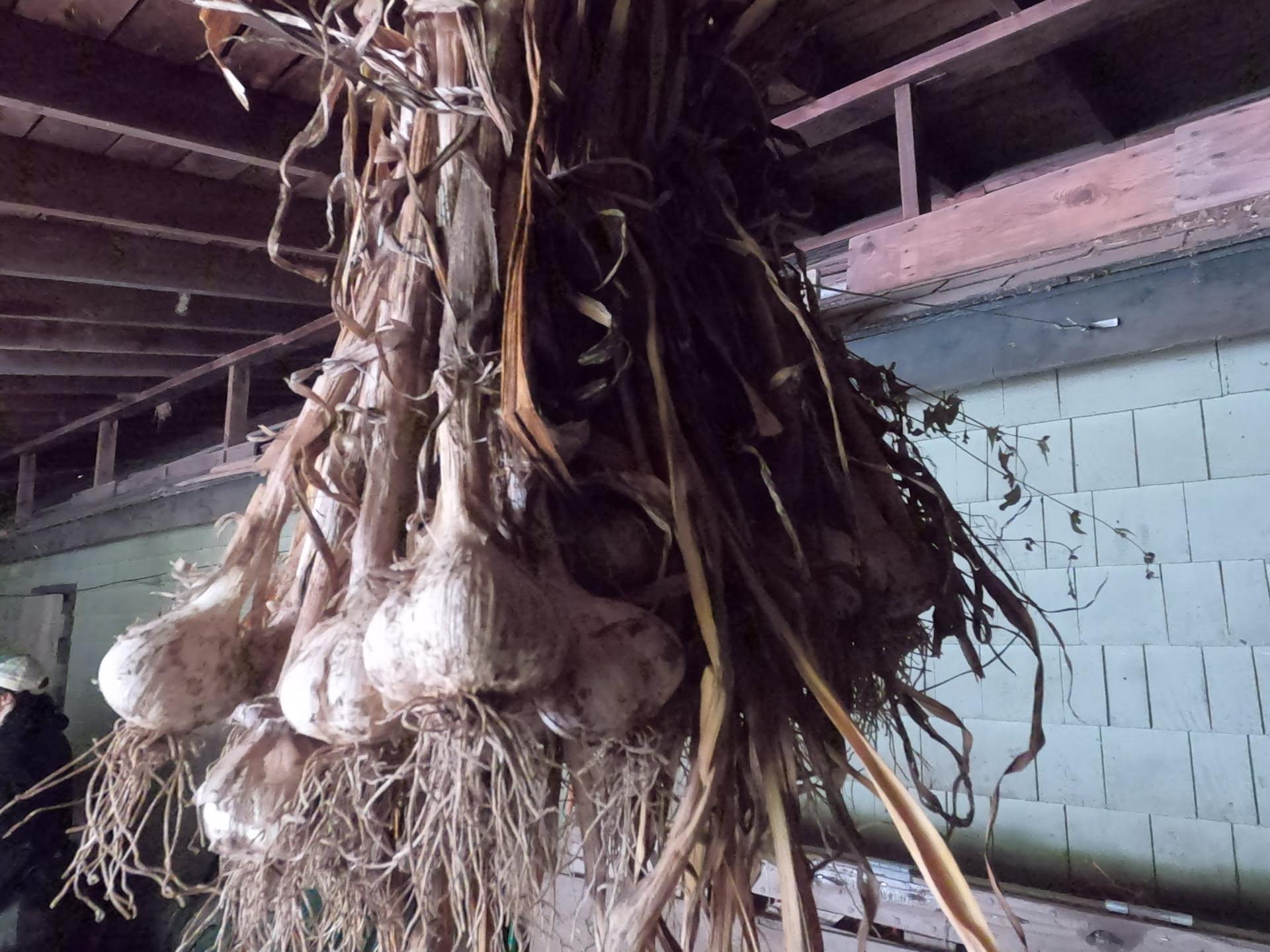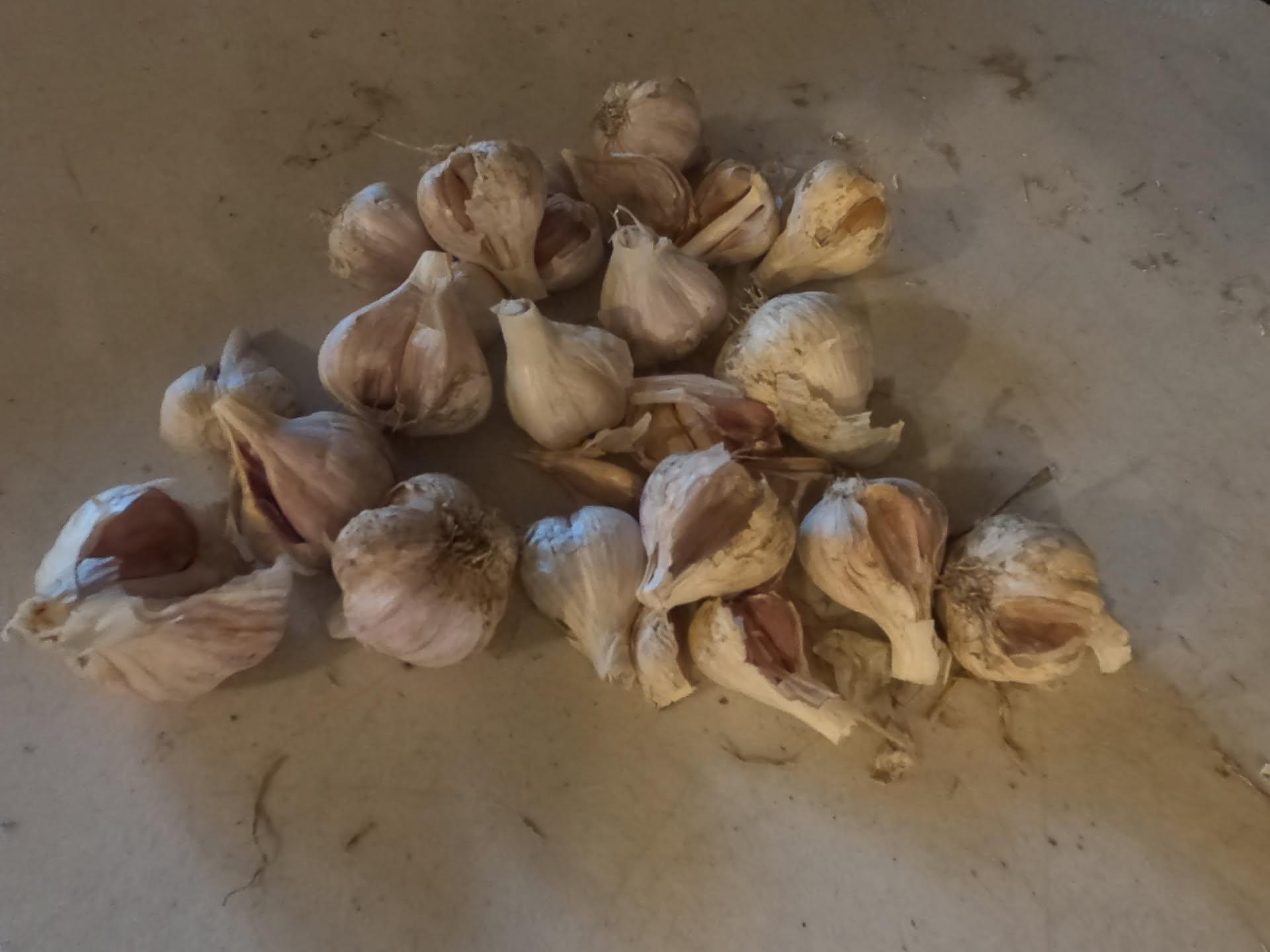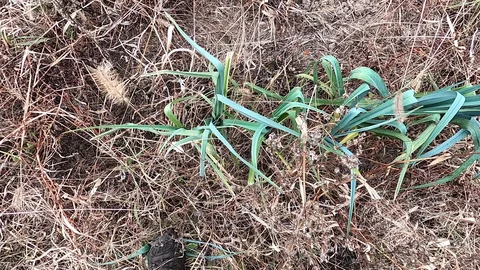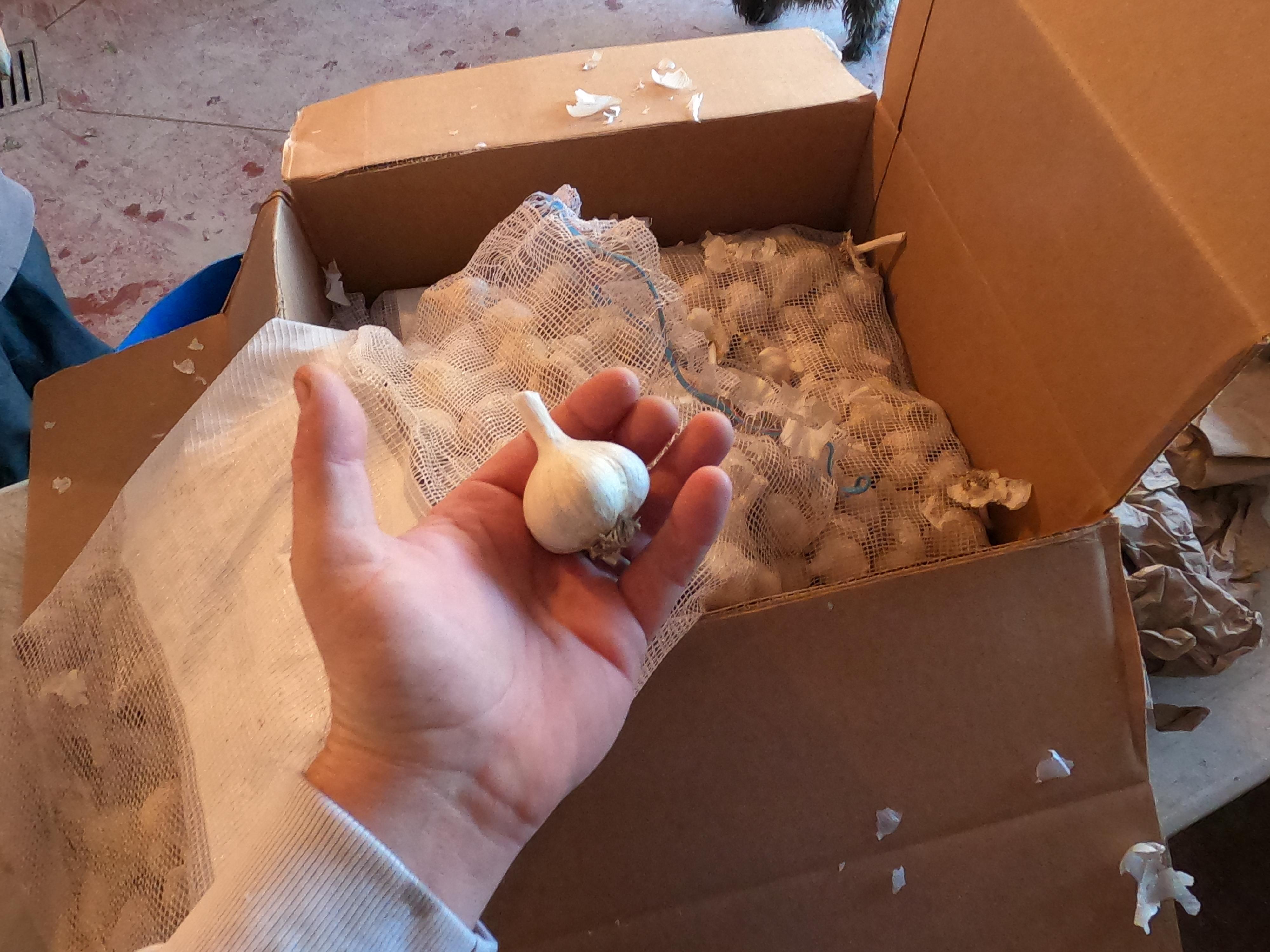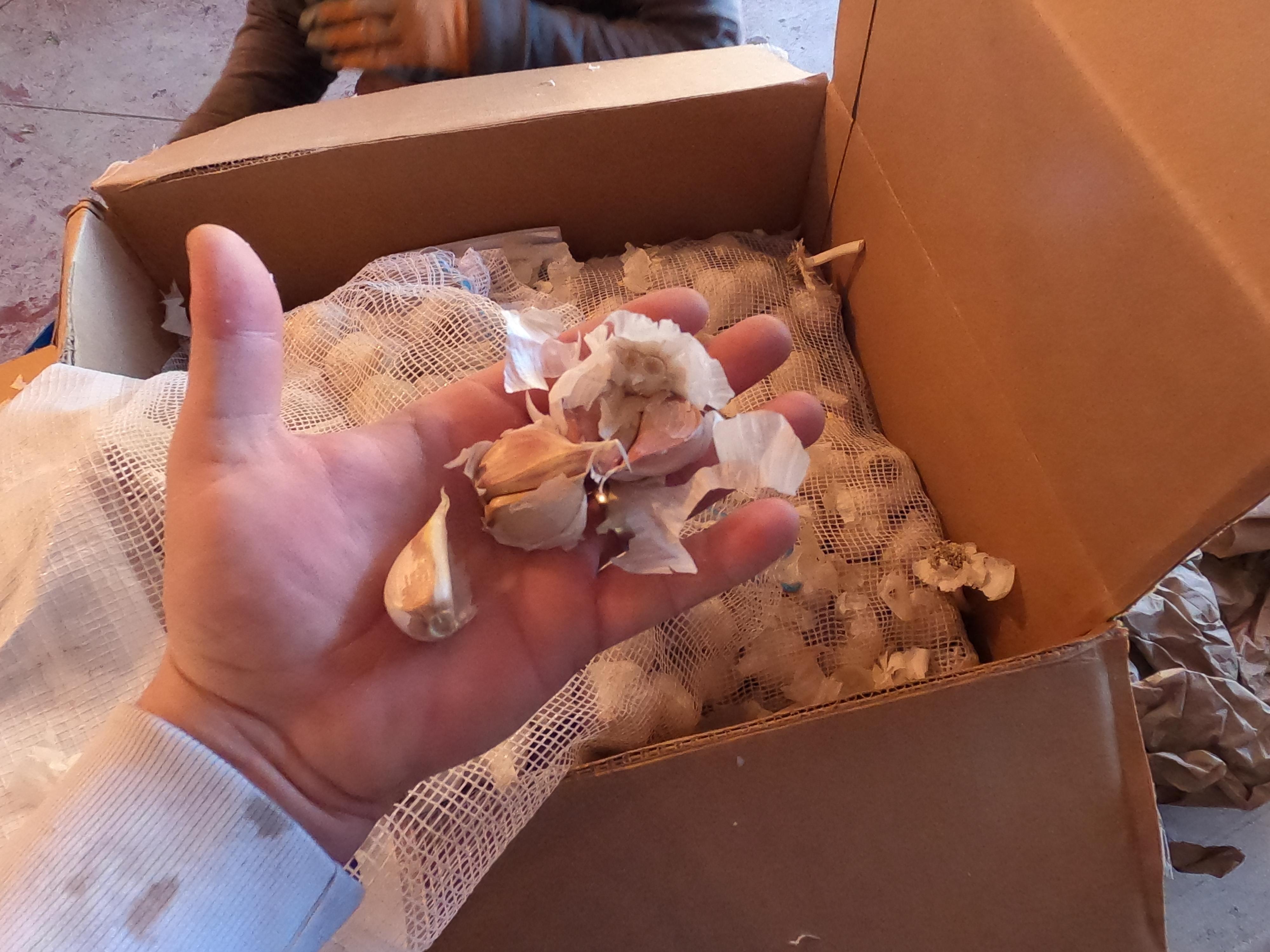TL;DR
We harvested radishes, broccoli rabe, and eggplant, then installed irrigation in the high tunnel, and cleaned garlic before packing deliveries and the van for market. It was a very rainy day, but we managed to get a lot done.
When You Listen, You See Things
I spend a lot of the time at the farm listening to the sounds of my surroundings while I’m working. Sounds that are familiar give a sense of routine while sounds that are out of place or new keep me engaged and alert.
In the field we often hear Killdeer, a species of bird I grew up with in my big back yard, particularly when we’re harvesting something in a field they made their home. We hear an occasional hawk or crow, finches, sparrows, robins, and of course the chickens in their coop yard.
There is an ever-present hum of insects like peepers, cicadas, crickets, and bees. It is like the native song of the grass, without which would seem dull or eerie.
One day when there was a power outage on Argilla Road, the sound of a neighbor’s generator in the distance was the way we knew when the power was still out, and when it shut off a few hours later we knew there was no need to start up ours for the afternoon.
Side-note: ‘argilla’ is the Italian word for ‘clay’, which fits with most of the soil on properties along this road. Likely due to hundreds of thousands of years of erosion and deposition, including the more recent thousand years of human activity, the soil here is clay-loamy and often rich in minerals from the ocean inlets and marshes.
But it’s not just hearing things when you listen…you also see with your eyes better. Busy with my activity, I often wouldn’t know to look up or focus my eyes on something across the field if I did not also pay attention to the sounds around me. Besides, it’s always good to look up every so often and take in the beauty of the surroundings.
The Rent I Pay to Work Here
This job pays just over Massachusetts minimum wage and not the reduced rate of agricultural or service workers either, which is generous. Unfortunately, to raise my family in the area I live a few towns away, this just simply isn’t feasible without some other form of income. Anyone can bag tomatoes and I have technology experience and skills that should be worth far more to someone somewhere, but the current job market has been abysmal since early last year (or even since 2022 for some).
I work this job as an internship, learning as much as I can and demonstrating capture and synthesis as best as I can with 24-hour turnaround on new blog entries each day I work on the farm. What I haven’t yet approached is the notion of major milestone projects, though I’ve been incrementally building on the note making and summarization processes since March.
Something like a report, thesis, or macro-presentation of my experience and research areas this year…which I need to start thinking about now…should be a priority in December because at the end of November, the farm no longer needs help beyond very part-time activities like egg washing and chicken chores that Jamie the farm operator can handle on his own.
I hope I can find a job that pays what I need to make but if I can’t by March, I’m back to this farm stuff again next year. 25 years in high tech work and this is the state of life after 40.
The Complete Garlic Lifecycle
Last year on October 30th, we planted garlic cloves in the dry fields. As a part-time volunteer, I had no idea what kind of hard work I had in store coming the next year. You can tell I’m clueless because I was still taking selfies at that time.
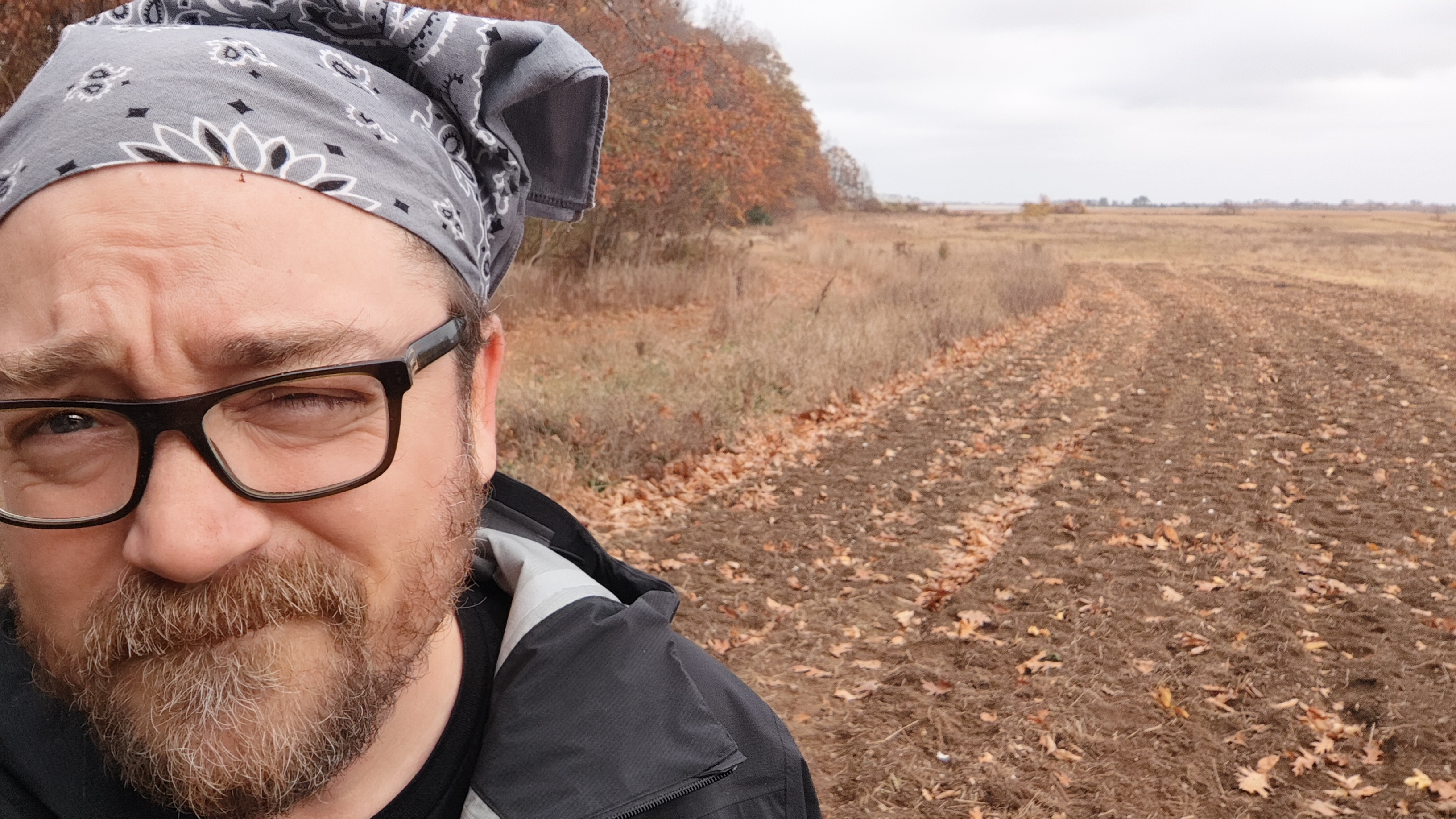
I also fully realized how out of shape my body was when we rolled huge bails of hay out over the garlic rows as much for over the winter. I nearly collapsed from exhaustion because of the dust particles, heavy physical labor, lack of exercise, nothing to eat for breakfast and…and…the sun came out, making the temperature go from 58 to 75 degrees in less than an hour.
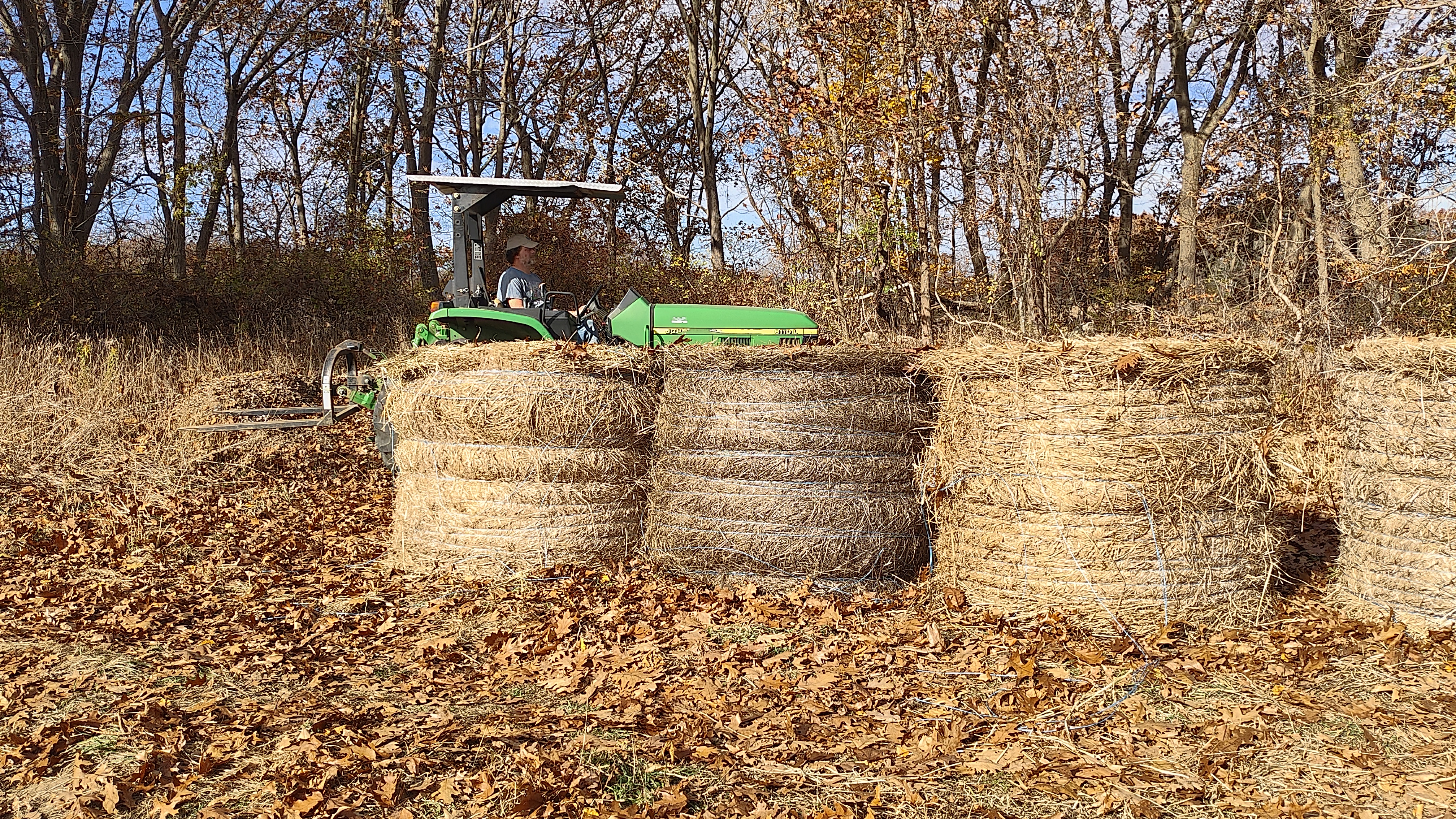
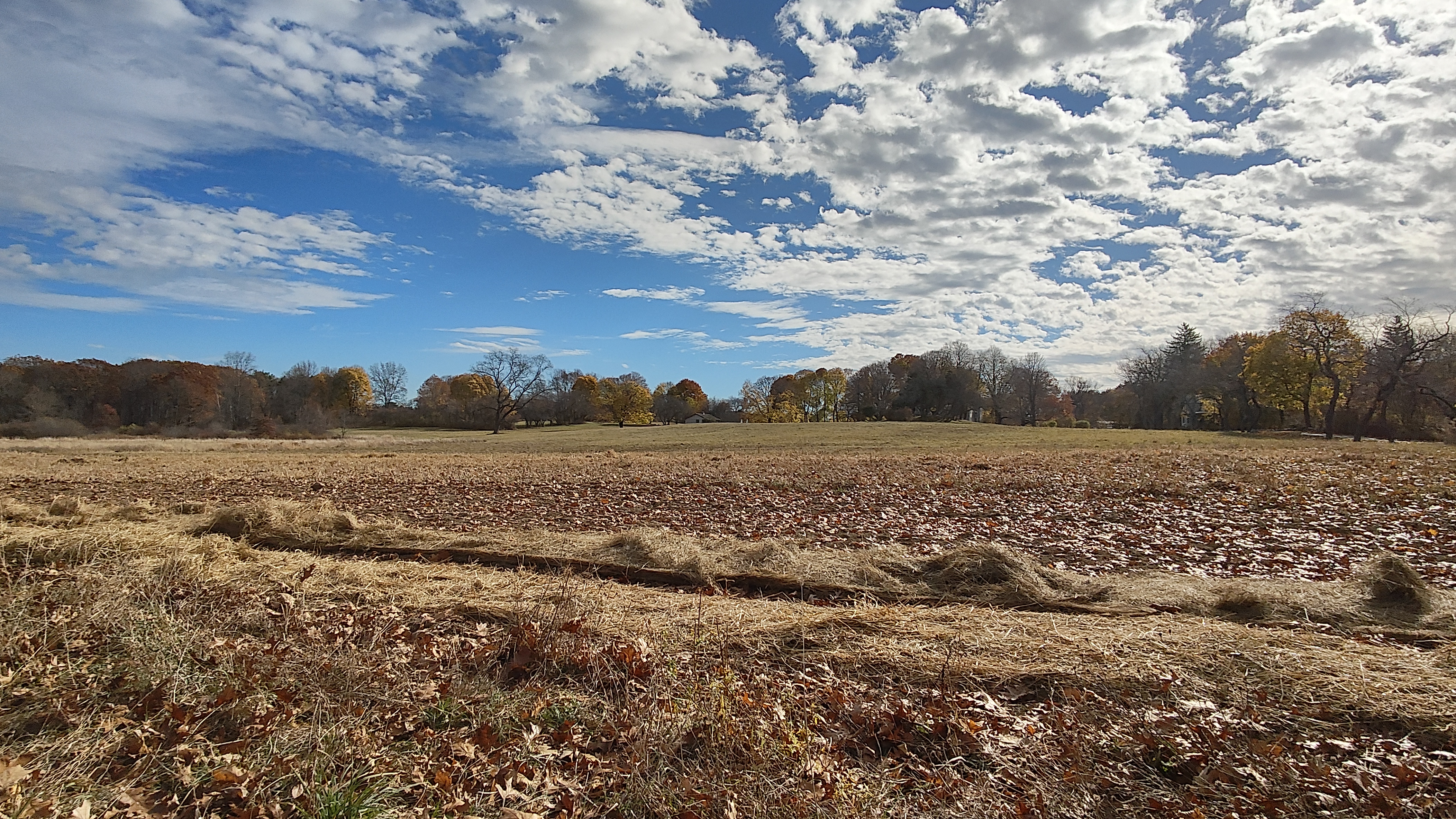
By June 23rd, we were harvesting the scapes of these garlics and on July 16th, we were done harvesting the garlic, which only took about a few hours over the course of two days. Then we bunched them and hung them up to dry in the shed where they onions also sit to cure.
Now, with a little bit of cleanup attention, the bulbs are ready for market. It’s an important thing to note that garlic should not be trimmed all the way down to the bulb, but rather have some stem left on it. This prevents the bulb from rotting and ensures that the garlic will last longer.
AI Summary from Field Notes
This weekend I plan to implement a more agentic approach to these summaries which will include external sources and reference materials from my own Karakeep bookmarking. I will preserve the original summaries somehow, maybe even provide a comparison option, as I’d like to show progress even on retroactive posts while still preserving the historical context.
For today, I’m still on version 0.8 of the summarization process, producing the outcomes below:
Summary
Main Themes:
- Weather Impact on Farm Operations: Rain affected market attendance, irrigation setup, and post-harvest handling.
- Market Preparation & Sales Strategy: Pre-packaging produce, using compostable bags, and adapting to low foot traffic.
- Irrigation System Installation: Setting up a drip irrigation system for a high tunnel (2-inch hose, header pipe, drip lines, and nozzles).
- Post-Harvest Processing: Garlic cleaning, tomato sorting, and quality management.
- Farm Daily Routine: Animal care, delivery logistics, and CSA share preparation.
Activities Performed by the Intern:
- Harvested radishes and broccoli brab.
- Installed irrigation system (header pipe, drip lines, nozzles).
- Prepared for the market: bagged tomatoes, sorted unsellable produce, packaged share bags.
- Cleaned garlic (trimmed bulbs, roots, peels).
- Watered pigs and chickens.
New Things Not Yet Encountered:
- Irrigation System Setup: Specific steps for connecting header pipes to high tunnels with drip lines.
- Garlic Cleaning Process: Trimming bulbs, roots, and peels for market presentation.
- Compostable Bag Use: Packaging tomatoes in compostable bags for CSA shares.
- Market Adaptation Strategies: Pre-packaging produce to maximize sales during low foot traffic.
Questions for Future Research:
- How does the 2-inch irrigation system perform in varying weather conditions? Can it be optimized for fall rainfall?
- What alternative strategies can compensate for reduced market foot traffic (e.g., online sales, promotions)?
- How to better manage unsellable produce (e.g., overripe tomatoes) to minimize waste?
- Are there standardized methods for garlic cleaning to ensure consistency?
- How can farms in New England adapt to frequent rain to maintain productivity?
Suggestions for Action:
- Improve Irrigation System: Monitor water flow and adjust setup for efficiency.
- Develop Market Strategies: Blend in-person and online sales to mitigate weather impact.
- Train Staff: Standardize garlic cleaning and tomato sorting for consistency.
- Track Weather Impact: Record how rain affects market attendance and adjust planning.
- Invest in Resilient Infrastructure: Explore rainwater harvesting or improved drainage systems.
Part 1
Main Themes:
- Impact of Weather on Farm Operations: The intern highlights how rain affects market attendance, irrigation setup, and post-harvest handling.
- Market Preparation and Sales Strategy: Emphasis on preparing for low foot traffic during rainy days, using compostable bags, and optimizing produce for sales.
- Irrigation System Installation: Details about setting up a drip irrigation system for a high tunnel.
- Post-Harvest Processing: Garlic cleaning, sorting tomatoes, and managing produce quality.
- Farm Daily Routine: Tasks like animal care, delivery logistics, and CSA share preparation.
Activities Performed by the Intern:
- Harvested radishes and broccoli brab.
- Installed irrigation system for a high tunnel (2-inch hose, header pipe, drip lines, and 10–12 nozzles).
- Prepared for the market:
- Bagged tomatoes for CSA shares.
- Sorted and removed unsellable tomatoes.
- Packaged share bags and loaded bins into the delivery van.
- Cleaned garlic (trimmed bulbs, roots, and peels).
- Watered pigs and chickens.
New Things Not Yet Encountered:
- Irrigation System Setup: Specific details about connecting a header pipe to a high tunnel with drip lines and swivel nozzles.
- Garlic Cleaning Process: Trimming bulbs, roots, and peels for market presentation.
- Compostable Bag Use: Using compostable bags for tomatoes in CSA shares.
- Market Adaptation Strategies: Techniques for maximizing sales during low foot traffic (e.g., pre-packaging produce).
Questions and Future Research Areas:
- Irrigation System Efficiency: How does the 2-inch irrigation system perform in different weather conditions? Could it be optimized for fall rainfall?
- Market Sales in Rainy Conditions: What are alternative strategies to compensate for reduced foot traffic (e.g., online sales, promotions)?
- Produce Preservation: How can unsellable produce (e.g., overripe tomatoes) be better managed to minimize waste?
- Garlic Cleaning Best Practices: Are there standardized methods for garlic preparation to ensure consistency and quality?
- Weather-Related Adaptation: How can farms in New England better prepare for frequent rain to maintain productivity?
Suggestions for Action:
- Improve Irrigation System: Monitor water flow and adjust drip line spacing for optimal coverage.
- Develop Market Strategies: Explore hybrid market approaches (e.g., combining in-person and online sales).
- Train Staff on Produce Handling: Standardize garlic cleaning and tomato sorting to ensure consistency.
- Track Weather Impact: Record how rain affects market attendance and adjust planning accordingly.
- Invest in Weather-Resilient Infrastructure: Consider rainwater harvesting or improved drainage systems for the farm.
[end of post]
Enjoy Reading This Article?
Here are some more articles you might like to read next:


